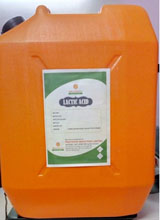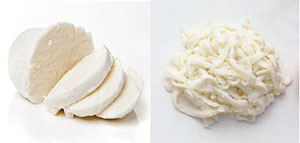- Research & Development
- Recognitions
-
Downloads
- Fermented Glucose / Sucrose
- Company Profile
- Research data of Prathista Agri in-put products
- Pharma & Food Ingredients as per FSSAI, Govt. of India
- Organic Food Preservatives
- Fermented Flours as Natural Mold Inhibitors
- Prathista 4G Fertilizers
- Product Catalogues
- National & International Research Publications / proceedings
- Home
- Corporate Info
- Profile
- Team Prathista
- Prathista Virgin
- Future Business Vision
- Corporate Videos
- Photo Gallery
- Prathista Product Launch function and Facilitation to Dr. Qazi at Marigold Hotel (30th May 2013)
- Professionals Visit to Prathista establishment & Interaction with International Personalities
- Inauguration of Newly Developed Facilities at Prathista Industries Limited (31st May 2013)
- Prathista Infrastructure Facilities
- Skoch Award for Team
- Interaction with team Prathista at route level
- Prathista Collaboration
- Punjab team visit to Prathista unique Biotechnology based manufacturing facilities
- Inauguration of Globally biggest Fermented flours
- Success Stories
- Life-Line Products
- Organic Acids & Salts (APIs)
- Lacto Gluconate Salts
- Anti-Microbial products & formulations
- Prathista LANOS - Organic Cheese / Paneer Lactate
- Prathista NOS - Organic Anti-Microbial Formulation
- Multi-purpose & Bio available (Vegan based) Chelated mineral salts
- Other Products
- Infrastructure
- Contact Us

Lactic Acid & Salts
- Home
- Life-line Products
- Organic Acids & Salts (APIs)
- Lactic Acid & Salts

Lactate Based Technology Products
The company's in-house R&D has developed first of its kind anaerobic fermentation process based technology to produce Calcium Lactate. The company has an overall 1 million capacity fermentation facility including both aerobic and anaerobic fermentation facilities.
-
Lactic Acid
-

Lactic acid is a natural organic acid with a long history of food, leather, wood-dyeing, and cosmetic industries. From a long time, lactic acid became commercially available. It was formed by natural fermentation in products such as cheese, yogurt, soy sauce, meat products, pickled vegetables, beer, and wine. Animal and human bodies also produce a significant amount of lactic acid during daily activities such as walking and running. Today, lactic acid and its salts like calcium lactate and sodium lactate are extensively used in food, cosmetic, and pharmaceutical industries. In Prathista lactic acid, calcium lactate, and sodium lactate are available as per IP / BP / USP specifications.
Specifications
Lactic acid (2-hydroxypropionic acid), CH3-CHOH COOH, is the most widely occurring hydroxycarboxylic acid, having a prime position due to its versatile applications in food, pharmaceutical, cosmetic, textile, leather, and chemical industries. Lactic acid was first found and described in sour milk by the Swedish chemist Karl Wilhelm Scheele in 1780. It was first isolated from sour milk by CW Scheele in 1780 and was first commercially produced in 1881 by CE Avery in Littleton, MA, USA. Pasteur, Lister, and Delbruck identified lactic acid as a microbial metabolite.
Lactic acid is chiral molecule and has two optical isomers. One is known as L-(+)-lactic acid and other is S-(-)-lactic acid. It is miscible with water or ethanol and is hygroscopic in nature. In animals, L-lactate is constantly produced from pyruvate by the enzyme lactate dehydrogenase (LDH) during normal metabolism and exercise. Its concentration does not increase until the rate of lactate production exceeds the rate of lactate removal. This equilibrium is governed by a number of factors, including monocarboxylate transporters, concentration along with isoform of LDH, and oxidative capacity of the tissues. The concentration of blood lactate is usually 1–2 mmol/L at rest, but can rise over 20 mmol/L during intense exertion.
Production
The carbon source for microbial production of lactic acid can be either sugar in the pure form such as glucose, sucrose, lactose etc. or sugar-containing materials such as molasses, whey, sugarcane bagasse, cassava bagasse, starchy materials from potato, tapioca, wheat, barley, and carrot. The economics of production of lactic acid and its derivatives is dependent on many factors of which the cost of raw material is very significant.
Some agricultural by-products that are potential substrates for lactic acid production are cornstarch, cassava starch, lignocelluloses, hemicelluloses hydrolysates, cottonseed hulls, Jerusalem artichokes, corn cob, corn stalks, beet molasses, wheat bran, rye flour, sweet sorghum, sugarcane press mud, cassava, barley starch, cellulose, carrot processing waste, molasses spent wash, corn fiber Hydrolysates, and potato starch.
Many starch-degrading Lactobacillus spp., can be used for the one-step lactic acid production. The starch-degrading Lactobacillus spp. are L. amylophilus, L. amylovorus, amylolytic strains of L. plantarum, and L. amylolyticus. Semi-solid-state fermentation is adopted in the case of certain amylolytic bacteria because they prefer to grow at higher moisture level.
Several approaches have been considered in literature for lactic acid recovery, including solvent extraction and electrodialysis. However, comparatively high amounts of solvents are needed for extraction, and toxic effects are provoked by these solvents. In electrodialysis units, cells adhered to membranes during the process, leading to decreased efficiency in the overall recovery system. In this field, ion exchange separation provides an interesting alternative for lactic acid recovery from solutions having low concentration and complex composition, as in the case of fermentation media.
There are several issues that need to be addressed for the biotechnological production of lactic acid, such as the development of high-performance, lactic acid-producing microorganisms and the lowering of the costs of raw materials and fermentation processes.

Applications
- Currently, lactic acid is becoming an important intermediate feedstock for the production of polylactide (PLA). One of its most promising applications is in the manufacturing of bio-degradable and bio-compatible polylactate polymers. It became an environmentally friendly alternative to non-biodegradable plastics derived from petrochemicals.
- In sugar confectionary, lactic acid is used in the continuous production line for high boiled sweets to make perfectly clear sweets with minimum sugar inversion and with no air trapping.
- In bakery products, it is used for direct acidification of bread. It increases butter stability and volume.
- It gives a mild and pleasant taste to acid pickles, relishes as well as salad dressings.
- Lactic acid suppresses Coliform and a mesenteric group of bacteria.
- Used in jams, jellies, and frozen fruit desserts.
- In dairy products such as cottage cheese, the addition of lactic acid is preferred to fermentation. It is also used in imitation dairy products such as cheese and yogurt powder.
- In fruits preservation like the firmness of apple slices during processing and it also inhabitant’s discoloration of fruits and some vegetables.
- Use of buffered lactic acid improves the taste and flavor of many beverages such as soft drinks, mineral water, carbonated fruit juices etc.
- In breweries, lactic acid is used for pre-adjustments during the mashing process and during wart cooking acidification which enhances the lager beer microbial stability as well as flavor.
- In the processing of canned fish sauces to improve the taste, flavors and to relieve the unpleasant amine flavor from fish meal.
- Lactic acid is used as pH regulator in pharma products.
- Used in many decalcification products such as toilet cleaners. Lactic acid has additional anti-microbial properties.
- Lactic acid is used in nickel plating because of its unique complexion constant for the nickel.
Different Salts of available Lactic acid
Fermentation of glucose (obtained from corn or soybean or potato) will be performed with the help of Lactobacillus strain produces crude lactic acid. Crude lactic acid is neutralized with respective mineral salt to produce Lactates. The lactate is further regenerated by acidification, filtration, concentration, and decolorization.
-
-
Calcium Lactate
-
Calcium Lactate has significant advantages over other calcium salts including low toxicity, better palatability with texture, higher stability and low astringency. Calcium is an essential element of tissues and blood which contains approximately 10 mg/ 100 mL. The average daily requirement of calcium is 500 mg, however, larger amounts are necessary during the periods of growth, pregnancy, and lactation. Inadequate calcium leads to rickets and imperfect calcification of bones and teeth.
Calcium carbonate applied for neutralization of lactic acid for producing Calcium Lactate. It has high solubility and bio-availability. Therefore it is a preferred choice in calcium deficiency therapies. Calcium Lactate is available in both powdered and granular forms.
In the pharmaceutical (Human medication) industry
It is an excellent calcium source for human pharma industry for preparing tablets for calcium therapy
- Tonics
- Multivitamins
- Sedatives
- Hypnotics, and
- Haematinics,
In the veterinary pharmaceutical industry
- In the veterinary pharmaceutical industry, Calcium Lactate is used for treating hypocalcemia in cases of milk fever as it has no irritant effect on body tissues.
- Used to treat grass tetany in combination with Magnesium Lactate.
In the food industry
- In the food industry to enhance the nutrition and health value of foods like baby food, juices, biscuits, health foods.
- Calcium Lactate is mixed in instant pudding powder mixes, in order to increase the speed of the reaction without developing a regular sour taste.
- Used in fortify milk and fermented dairy drinks.
- Calcium Lactate enriches products such as sports as well as health drinks, fruit juices, diet foods, and infant formulas with improved calcium bio-availability.
- It is used as an anti-tartar agent in many oral care products such as toothpaste and mouthwash.
-
-
Organic Cheese & Paneer Maker Lactate
-
Calcium salt of lactic acid produced from organic raw materials fermentation is called Cheese Lactate. It has basic material of Calcium Lactate derived from organic sources with certifications from Indian organic certifying agencies and OMRI of USA for the first time in the world. This organic salt is widely used all over the world for the production of cheese, panner and other allied milk proteins.

-
-
Sodium Lactate
-
It has sodium lactate (C3H5NaO3) with a molecular weight of 112.06 g/mol. Sodium has a major role in maintaining cell integrity along with potassium. Sodium maintains the proper muscle and nerve functions. Low sodium levels develop hyponatremia condition with symptoms like muscle cramps, headache, restlessness, nausea, fatigue, confusion, hallucinations, decreased consciousness, and coma. Therefore balanced levels of sodium are mandatory for life processes. All feed supplements need to be balanced with sodium addition for making a complete diet.
- It is used as an electrolyte in intravenous solutions intended for fluid or electrolyte replenishment.
- It is used in Continuous Ambulatory Peritoneal Dialysis (CAPD) solution for nephrotic patients and in dialysis solutions for conventional artificial kidney machines.
- Sodium Lactate is extensively used in processed meat to extended shelf life and flavor.
- It is used as a moisturizer as well as pH regulator in toiletry products such as shower gels, bar soaps, after-shave lotions, liquid soaps, and shampoos. Moreover, the addition of Sodium Lactate in bar soaps reduces the water loss during storage.
- In the construction industry as a retarded and water-reducer for concrete.
- In bottle washing as a controller of heavy metal and harness ions.
- In the textile industry as a sequestering agent for heavy metal ions.
-
-
Potassium Lactate
-
Potassium Lactate is administered in all cases of potassium deficiency and when there is a danger of potassium depletion. Potassium depletion may be caused by diabetic acidosis, diarrhea, vomiting etc., potassium chloride is also used, but Potassium Lactate is preferred because of its slightly mild saline taste.
-
-
Other Lactates
-
Based on market requirements, the company can supply any individual mineral lactate salt or in combinations as per customer requirements for Pharma, Food, Veterinary, and Agricultural segments.
Packing & Storage
- The mode of packing may be changed as per the customer requirements on request.
- These products have to be stored in the cool dry environment, away from sunlight to ensure the shelf life of 2 - 3 years.
-

